40 why are serving sizes standardized on food labels
Differences between EU and US nutrition labels go far beyond ounces and ... In the US, nutritional labels must indicate the number of servings per container - so calories are broken down based on how many slices of bread come in a package, or how many 12-chip portions a... Why Are Serving Sizes on Nutrition Labels So Small? The serving sizes on the nutrition labels for some foods are unrealistically small, especially for foods high in fat, sugar, or sodium. Are the small sizes an effort to minimize those contents?...
Portion Size Versus Serving Size | American Heart Association Serving Size is the amount of food listed on a product's Nutrition Facts label. So all of the nutritional values you see on the label are for the serving size the manufacturer suggests on the package. Once we understand the difference, it's easier to determine how much to serve and easier to teach kids the difference between the two. ...
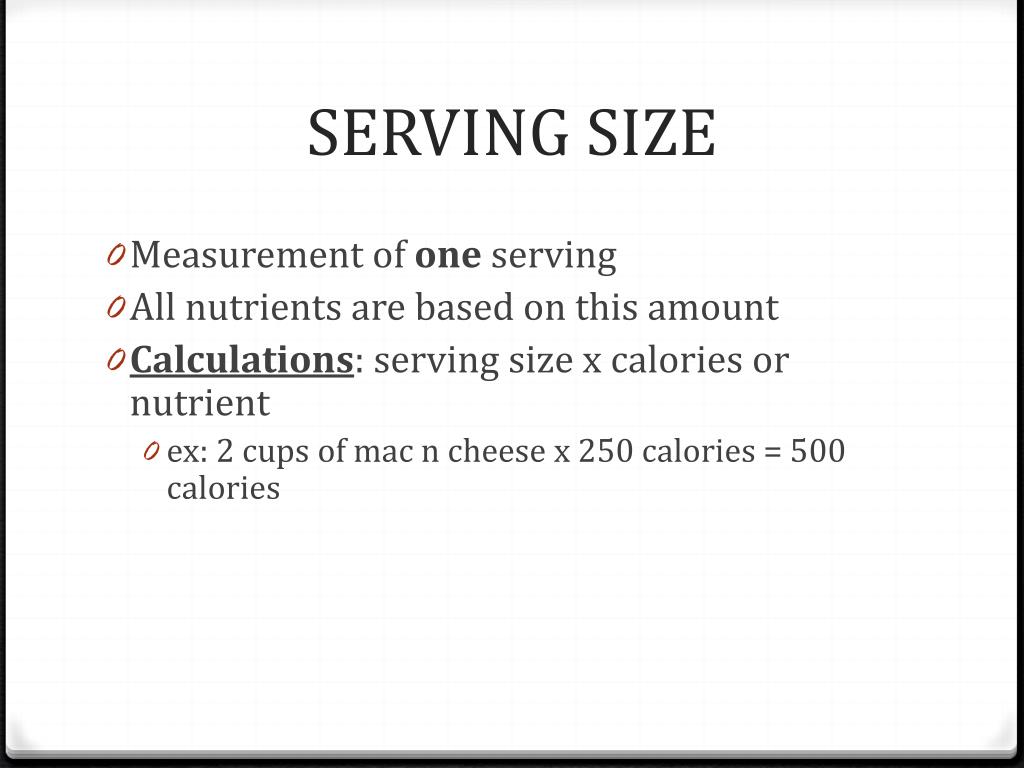
Why are serving sizes standardized on food labels
Serving Size vs Portion Size Is There a Difference Serving size is a standardized amount of food. It may be used to quantify recommended amounts, as is the case with the MyPlate food groups, or represent quantities that people typically consume on a Nutrition Facts label. Portion size is the amount of a food you choose to eat — which may be more or less than a serving. The Difference Between 'Portion Size' and 'Serving Size' (and Why It ... It's true that understanding serving sizes helps you make sense of food labels, so that you can get a more accurate sense of the nutritional makeup of your food depending on how many servings you... Serving and Portion Sizes Explained - Lark Serving sizes are standard amounts of food. The Academy of Nutrition and Dietetics explains that they are the amounts of food that you may see on a nutrition facts panel. And they can be the amounts you see when you are looking at recommendations for daily intake. Portion sizes are the amounts of food that are served or eaten.
Why are serving sizes standardized on food labels. IFIC Study Serves Up Reality Check on Serving, Portion Sizes "Helping to control weight" ranked in the top two reasons for 36%, followed by "helping to avoid eating too much of certain foods" (30%) and "helping to know how much they should be eating or drinking" (26%). Sizing Up the Terms: Portion Control Serving Size vs. Portion Size, What's the Difference? - Prevention A serving size is defined as a standardized, measured amount of food. This is most commonly used by the United States Department of Agriculture (USDA) in reference to food groups or printed on... How to Understand and Use the Nutrition Facts Label | FDA - U.S. Food ... Serving sizes are standardized to make it easier to compare similar foods; they are provided in familiar units, such as cups or pieces, followed by the metric amount, e.g., the number of grams (g).... 'Portion Size' and 'Serving Size' Are Not the Same: Why It Matters "Serving size" is based on a standardized amount of food or drink which is established by research done on the eating habits of adults and children. Understanding the difference between portion...
The Importance of Reading the Food Label and Nutritional Facts The presence of standardized nutrition labels makes it easy for all of us to compare the contents of similar products and decide which one we would prefer to consume. All labels provide key information about any given packaged food, such as serving size, number of calories, fat content, cholesterol, protein, sugar content, carbohydrates, etc. Why it is Important to pay attention to Serving Sizes - MenuSano July 27, 2022. When you are reading the nutrition facts label on a food product, it is essential to pay attention to the serving size as this can determine what you're actually eating. For example, some products may have a serving size of 1/2 cup, while others may have a serving size of 1 cup. This means that the nutrition facts for a 1/2 cup ... Why do food labels have standardized "serving sizes" and "servings per ... Why do food labels have standardized "serving sizes" and "servings per container" listed on label? ANSWER 0 colbib ANSWERS: 1-Icy-so you know how much to eat and also tells you how many ppl can eat that amount before it is gone. you have a cup of noodles serving size is 1/3 cup than you can get 3 servings from container. helps with meal ... There's a Difference Between 'Portion Size' and 'Serving Size' A "portion" is defined as "the amount of food served or provided for consumption at one time". A "serving" is defined as "an amount of food or drink that constitutes an individual's basic daily requirement". For many food products, the serving size is often smaller than the portion. Sticking to these recommended servings can ...
Food Labels Guide & Examples | How to Read Nutrition Labels - Video ... Serving sizes are standardized so that consumers are able to compare similar food products. ... Food labels list the serving size and number of servings per container, the amount of calories in a ... IFIC Study Serves Up Reality Check on Serving, Portion Sizes The ways people control their portion sizes vary: Similar numbers said they try to eat more slowly (34%), stop eating once they feel full, even if there's still food on their plate (34%), use ... Consumer Survey: Understanding Portion and Serving Sizes Regardless of food or beverage category, about half say they try to eat close to the serving size listed on packaging. The top-ranked reasons for paying attention to portion sizes are to help control weight (36% ranked in top 2) and to help avoid eating too much of certain foods (30%). Serving Size on the New Nutrition Facts Label | FDA - U.S. Food and ... Some serving sizes have changed on the new Nutrition Facts label. By law, serving sizes must be based on the amount of food people typically consume, rather than how much they should consume....
Definition and Importance of the Serving Size | Healthfully The serving size creates a standard reference used on food labels. Importance The standardized serving size is one tool you can use to be sure you're following a healthy, balanced diet. The United States Department of Agriculture determined that nutritional values be contained in the defined serving size.
Serving Size vs. Portion Size, Explained by a Dietitian - Real Simple "Because a portion is not standardized, it could cause you to eat more or less than a serving size," Green explains. "For instance, the serving size for a regular soda may be 8 fluid ounces, but if you fill a 20-ounce cup with soda, you are drinking more than the serving size."
F.D.A. Weighs Update to Standard Serving Sizes - The New York Times On today's food packages, many of the serving sizes puzzle even the experts. ... But the calorie count refers to a one-ounce serving, and the label says the bag holds one-and-one-third servings ...
FDA Food Product Labeling & Packaging Requirements - ESHA Food Product Labeling and Packaging 101. The FDA regulates most packaged foods sold in the United States and has specific requirements for what elements a package must contain (e.g. a Nutrition Facts panel, ingredient statement, etc.). In order to sell your food products, you must comply with the FDA's packaging laws unless your operation is ...
More Realistic -- Serving Sizes for Food Labels - HuffPost FDA Proposes Larger -- More Realistic -- Serving Sizes for Food Labels The FDA is proposing to change the standard serving sizes to reflect what people actually eat. The FDA defines the current serving sizes as amounts of foods commonly consumed based on dietary intake surveys conducted in the 1970s and 1980s. By Dr. Lisa Young, Contributor
The FDA's New Nutrition Labels Make So Much More Sense - Shape 5 Things You Need to Know About the New Nutrition Facts Label Food and Drug Administration Even if serving sizes might sometimes seem arbitrary, they're standardized based on what the FDA calls the reference amounts customarily consumed (RACC). Those numbers are based in part on national survey results, so they're subject to change.
Understanding FDA Food Labeling: A Guide for Food Manufacturers - LabelCalc Calories per portion can be determined with online nutritional analysis software by simply entering your product recipe and serving size. Total calories and calories from fat are both required. Calories per serving should be rounded in the following ways: Under 50 calories: Round up or down to the nearest 5 increment (i.e., 36 calories becomes 35)
Food Label Flashcards | Quizlet Serving Size and serving per container Serving sizes are supposed to be standardized to reflect the amt of food people actually eat, but sometimes they are quite unrealistic. How to find out calories # of calories x servings per container 90 x 4 = 360 calories How to find percent of calories from fat calories from fat / calories 30 / 90 = .33 = 33%
Nutrition Facts Matter: What Food Labels Mean (and Why They Changed) Pay extra attention to the serving size. This is often one of the most overlooked items on the nutrition facts label. An official serving may be smaller that you think. A "serving" is different from a "portion." A serving is a measured amount of food. A portion is the amount you decide to actually eat for a meal or snack.[2]
Who Decides Serving Sizes? | HuffPost Life A serving size is a measurement that allows food manufacturers to create accurate and uniform nutrition labels across brands. It is not a prescriptive size that relates to health.
Serving and Portion Sizes Explained - Lark Serving sizes are standard amounts of food. The Academy of Nutrition and Dietetics explains that they are the amounts of food that you may see on a nutrition facts panel. And they can be the amounts you see when you are looking at recommendations for daily intake. Portion sizes are the amounts of food that are served or eaten.
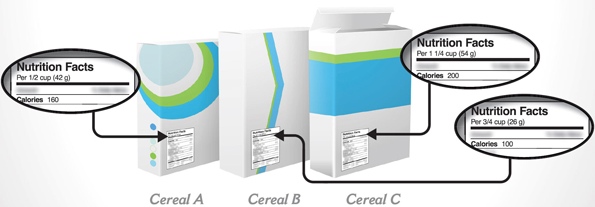
Proposed changes to nutrition labels, including serving sizes, means they’ll be easier to read ...
The Difference Between 'Portion Size' and 'Serving Size' (and Why It ... It's true that understanding serving sizes helps you make sense of food labels, so that you can get a more accurate sense of the nutritional makeup of your food depending on how many servings you...
Serving Size vs Portion Size Is There a Difference Serving size is a standardized amount of food. It may be used to quantify recommended amounts, as is the case with the MyPlate food groups, or represent quantities that people typically consume on a Nutrition Facts label. Portion size is the amount of a food you choose to eat — which may be more or less than a serving.

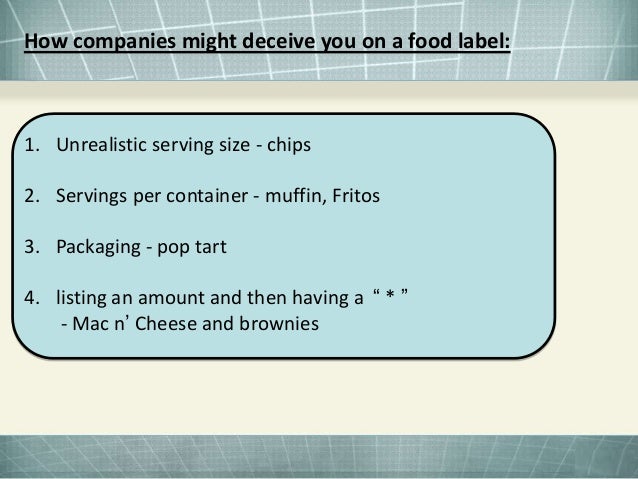
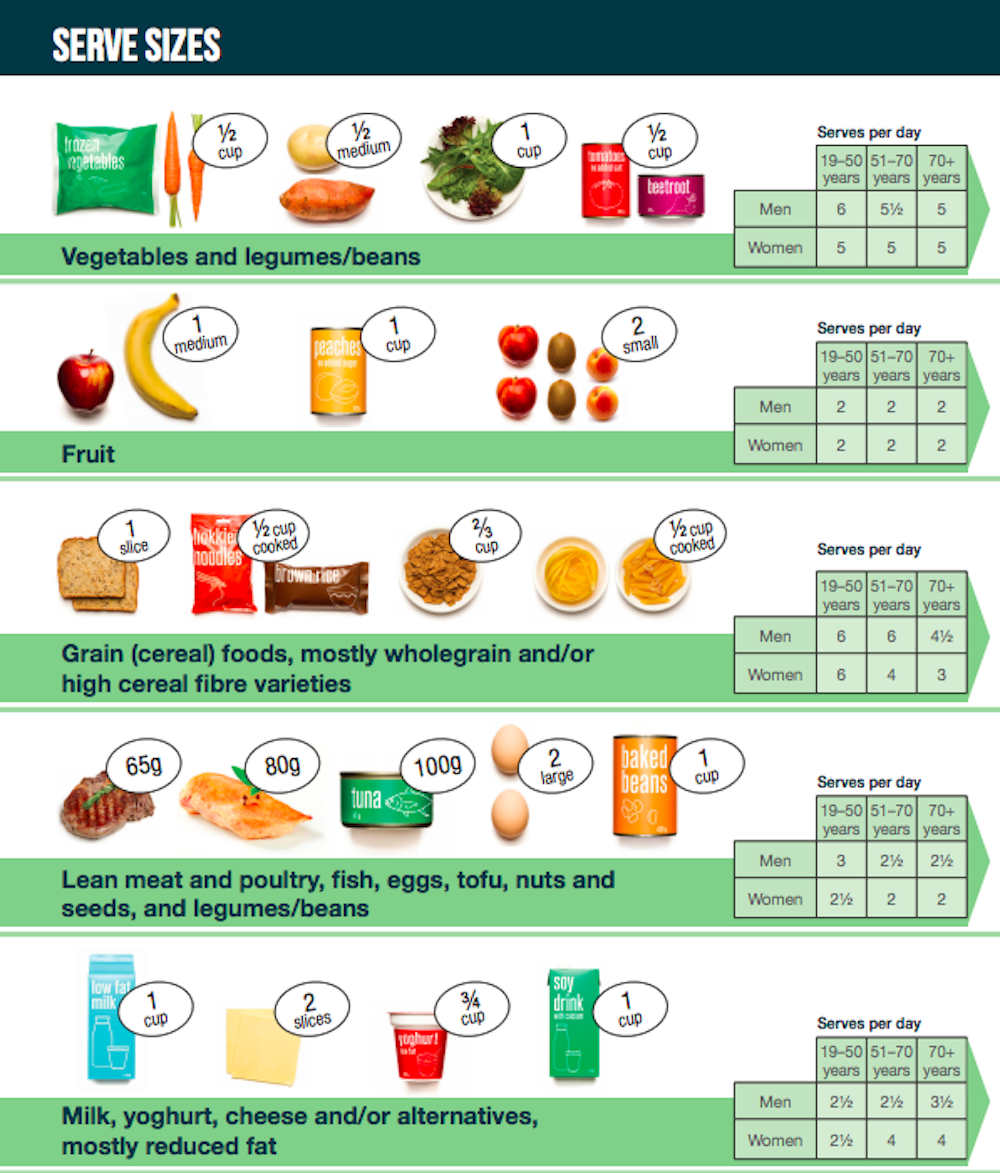
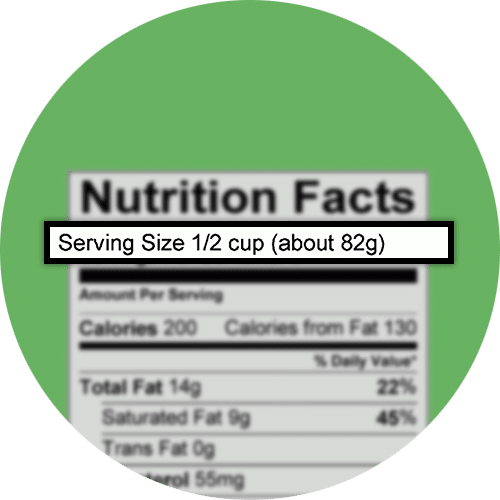






Post a Comment for "40 why are serving sizes standardized on food labels"